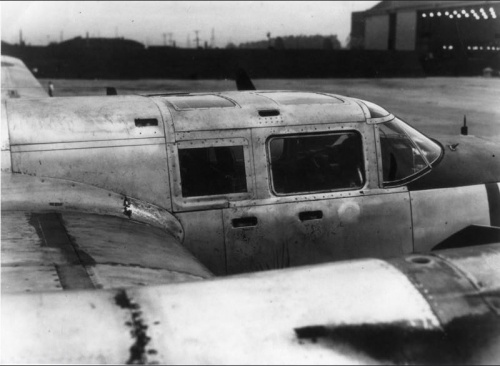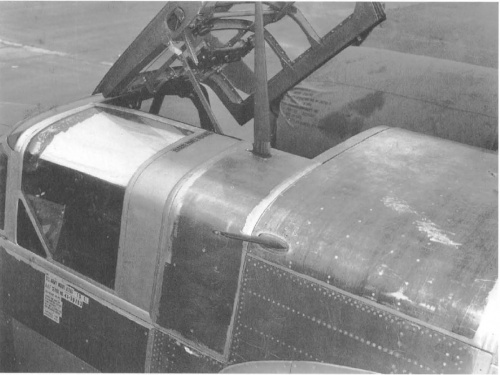Cockpit Changes
Generation 1
The first Douglas Invaders produced began with a flat-top cockpit. The cockpit had a single hatch that opened forward on the Navigator's side. The first iteration of the cockpit also had large window frames that restricted view. This type of cockpit was found on A-26B production blocks 1, 5, and 10, as well as A26C blocks 1 and 10.
When the canopy is closed the view is very restricted. Having the single, awkward point of entry also made it difficult for crew to bail out.
Generation 2
By the A-26B-15 block and A-26C-15 block that windscreen frames had been reduced in size to allow for better visibility and the windscreen paneling was larger, resulting in fewer cross frames. But, the cockpit still opened forward on the one side. Note how in this second version the top and side panel hinges together as one piece. The glass panel is also curved and only has two thin frames to help keep the shape.
In this view Invader 41-39183 had its original first generation canopy upgraded to the newer second generation type. The marks are still evident around the window frame. This photo is noteworthy because it clearly shows the pilot's side. The pilot's window frame is shorter than the navigator's, but it is now completely free of support bars and offers an unobstructed view.
Generation 3
Ingress, and especially egress during bailout, were very difficult with that forward open design. By the A-26B-30 block, the cockpit hatch had been redesigned to be a "Clamshell" type or Bubble Top, that opened on both sides. This version also raised the pilot's seat a few inches to improve visibility. This allowed the pilot to see over the engines better.
Here you can see the clamshell cockpit closed. While this both greatly improved visibility and entry and exit into the cockpit area, it did present one drawback. On the earlier flat-top versions, the upper turret could be locked in a forward position and used as a strafing weapon by the pilot. However, due to the increased height of this new cockpit, that was no longer possible.
13th Bombardment Squadron Navigator Charles Hinton demonstrates how easy it is to get in and out of the aircraft with the new cockpits.





